Evolutionary Biology 2016
Shortlisted entries in the Evolutionary Biology category from the 2016 Royal Society Publishing Photography Competition.
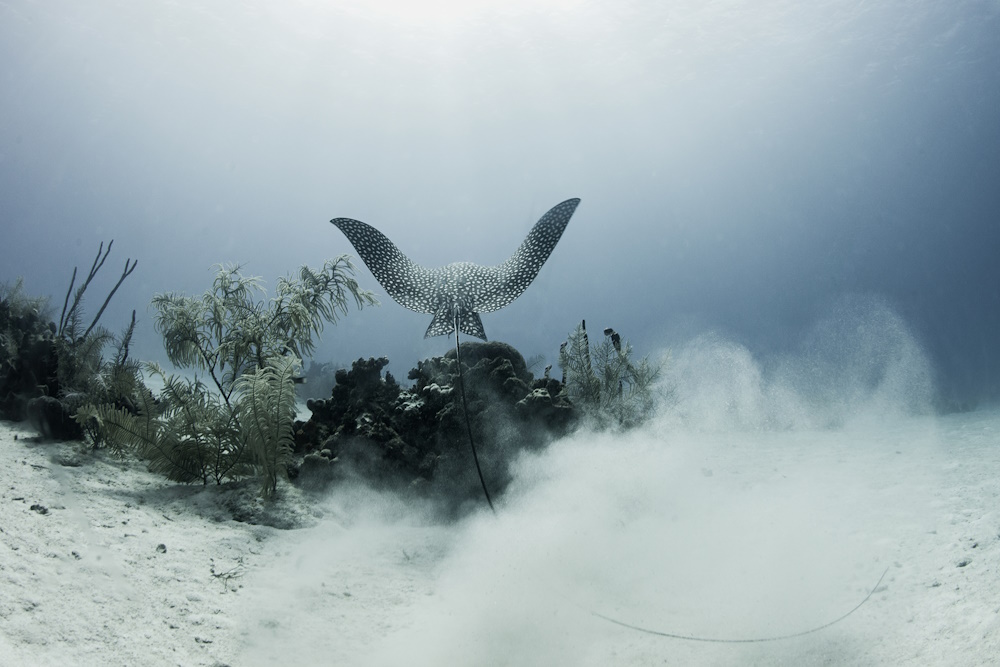
Category winner: Evolutionary Biology. "Departing eagle ray" by Nick Robertson-Brown. An eagle ray swims over the reef with its prey, having dug it up from the sandy sea-bed. Eagle rays have evolved very long tails but this is the longest that I have ever seen. From a functional morphology perspective, when considering structure-function relationships, this image has an interesting tension. On the one hand, the image makes familiar sense: the ray in water flexes its fins much like a bird in air, hinting the possibility of convergence. On the other hand, the image is an utter enigma: what could possibly be the function of this unusually long tail?
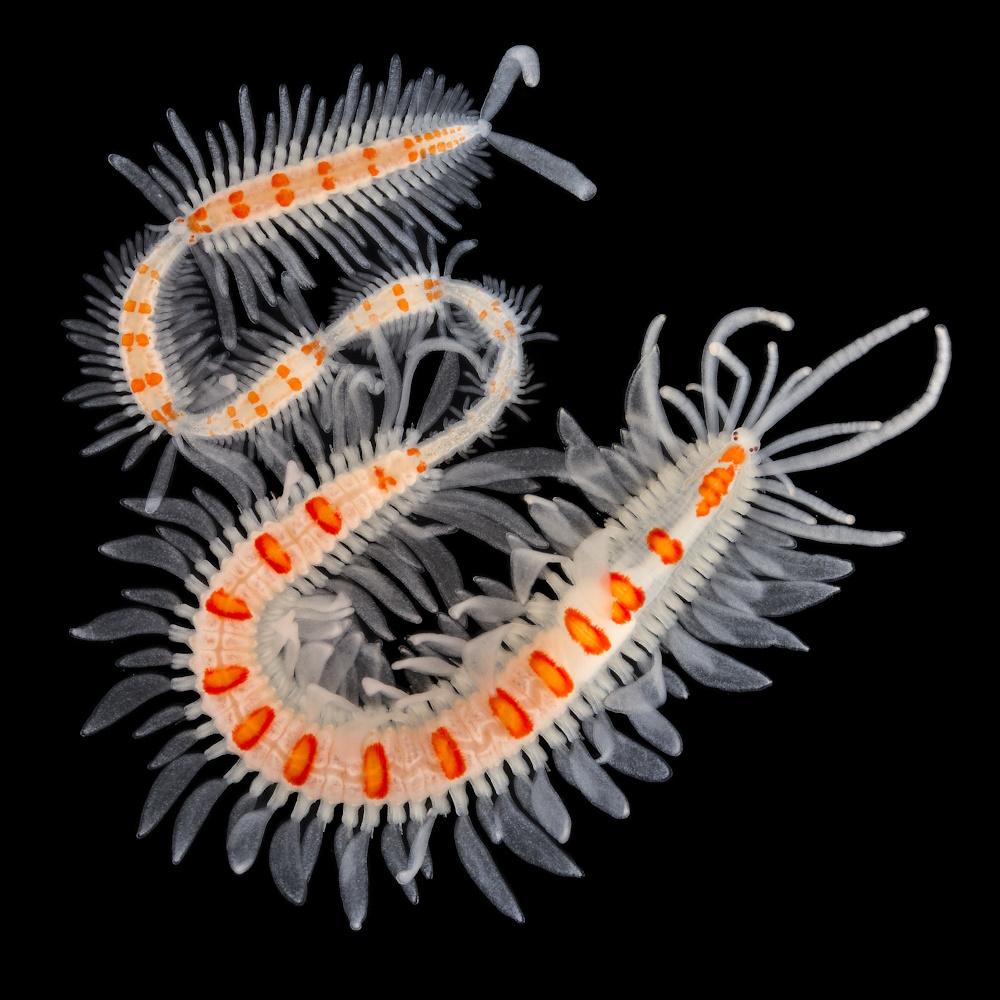
Runner up: Evolutionary Biology. "Polychaetous worm with engine and wagons" by Fredrik Pleijel. This trainworm (Myrianida pinnigera), which is 35mm from head to tail, lives on the sea floor. Its front end, the trainworm’s engine, is followed by a row of carriages called ‘stolons’ that increase in size towards the worm’s tail end. The carriages are the worm’s swimming sexual organs. When the trainworm is mature, the last carriage in the train lets go and detaches. It swims up the water column to reproduce. The carriages, unlike the engine, all lack a gut and are full of either sperm or eggs. In the water column the well-developed sensory organs seek out another stolon to mate with. After mating the male stolons die. The females survive a short time to shelter the embryos, which are carried in their bellies. Meanwhile, the trainworm on the sea floor continues to produce stolon carriages.
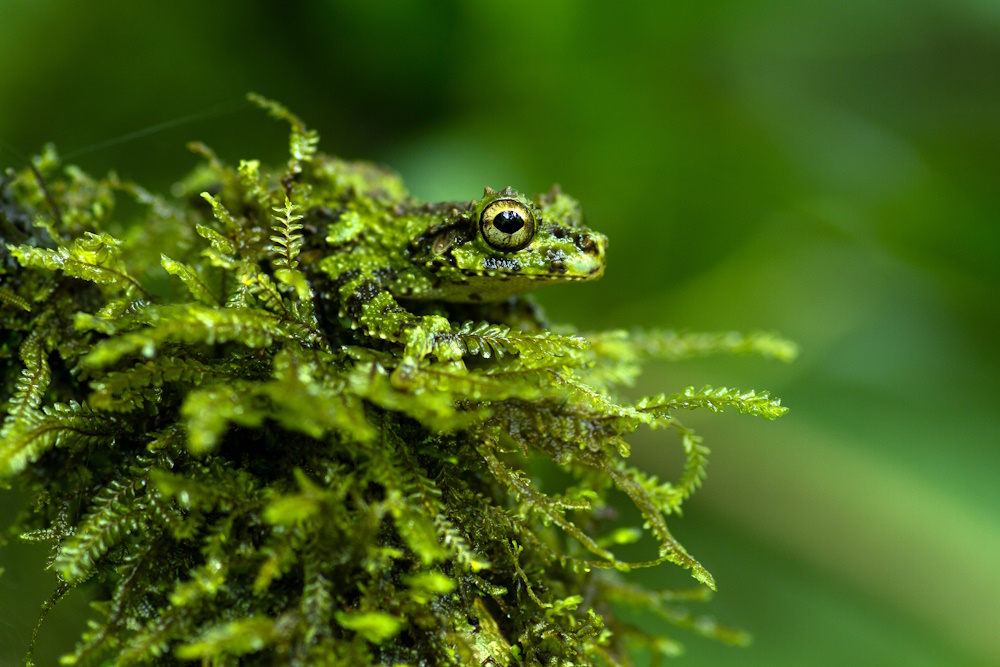
"Masters of camouflage: where the moss ends the frog begins" by Andrius Pašukonis. Found along mossy creeks of the South American rainforest, Osteocephalus cabrerai is a spectacular illustration of camouflage. The only reliable way to detect this species is looking for a faint eye shine along the creeks at night. Little is known about the ecology of this species outside of these few encounters. Every time I turned away and turned back again while photographing this individual, I was sure that the frog had disappeared even though it never actually moved. Photographed in Nouragues nature reserve, French Guiana.
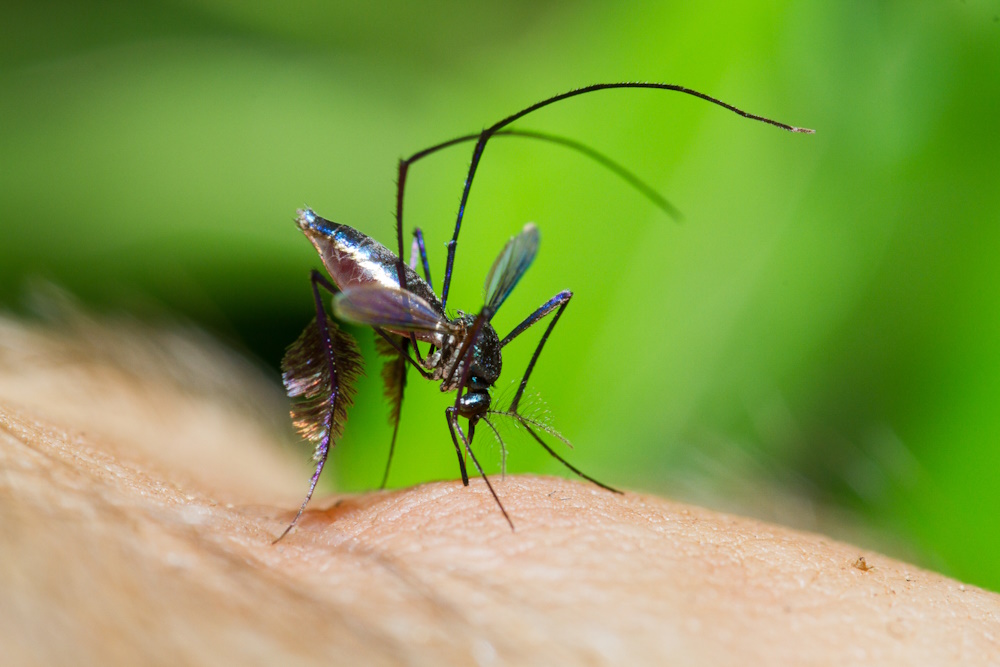
"Extravagant ornament of female mosquitoes in the rainforest" by Andrius Pašukonis. Sabethes cyaneus mosquitoes are among the most extravagant insects of the Amazonian rainforest. Interestingly, the biting mosquito females (like the one in the photo) are as ornamented as their males. Males appear to use their striking leg paddles in courtship displays. Behavioral experiments have revealed that males will preferably court females with large leg paddles. Unexpectedly, the females had no preference for males with larger ornaments and thus the exact function of these extravagant ornaments in males remain unknown. Photographed on my own arm in Nouragues nature reserve, French Guiana.
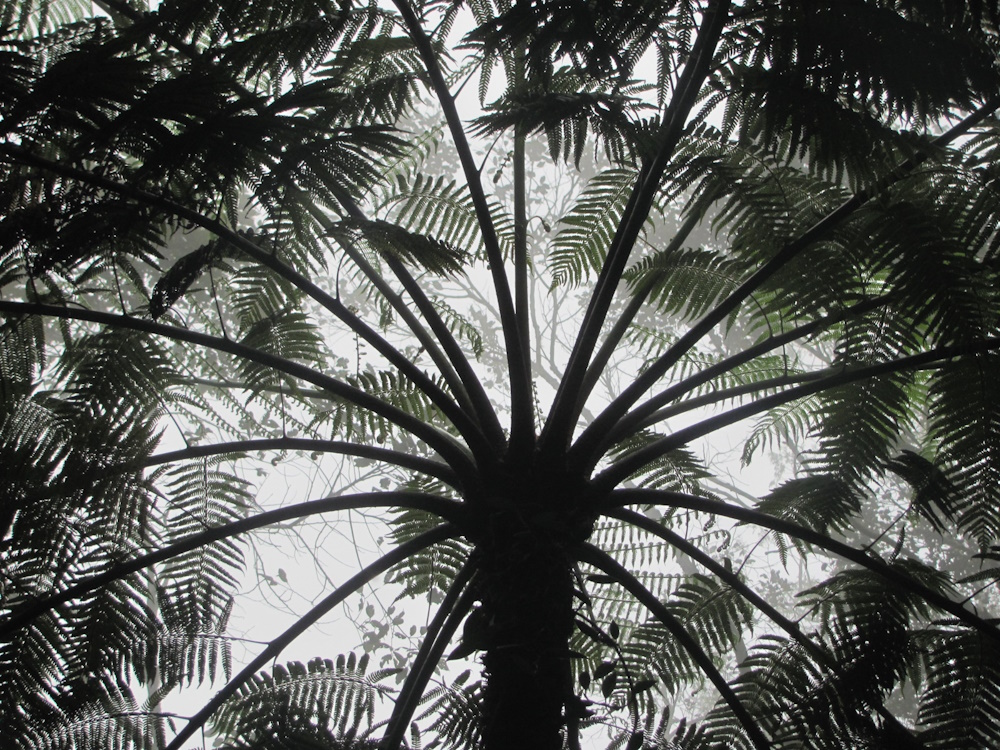
"In the shadow of the angiosperms" by Serban Proches. Recent research shows that modern ferns diversified in the shadow of the angiosperms. Here, a tree fern grows in the shrub layer of a cloud forest on Mount Kinabalu, Sabah, Malaysia.
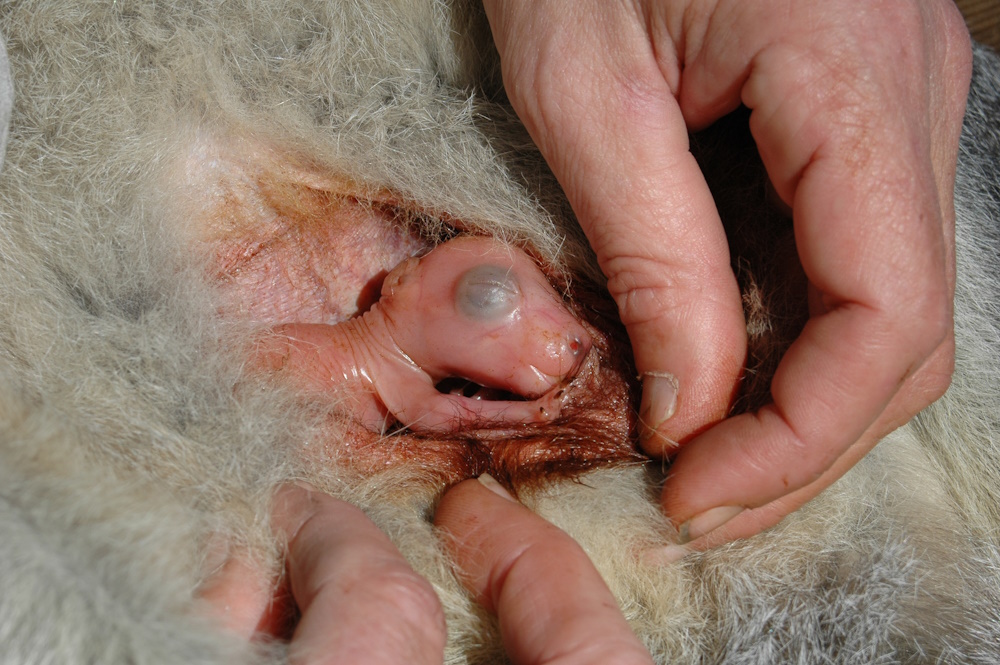
"Life in a pouch" by Valentina Mella. This picture shows the spectacular reproductive evolution of marsupials, which give birth at a very early stage of development. Newborn crawl up the bodies of their mothers and into the pouch, where they remain attached to a teat for a number of weeks. The photo shows a joey of western brush wallaby (Macropus irma) attached to a teat inside the pouch. The photo was taken in Boyup Brook, Western Australia, during a routine pouch-check at Roo Gully Wildlife Sanctuary.
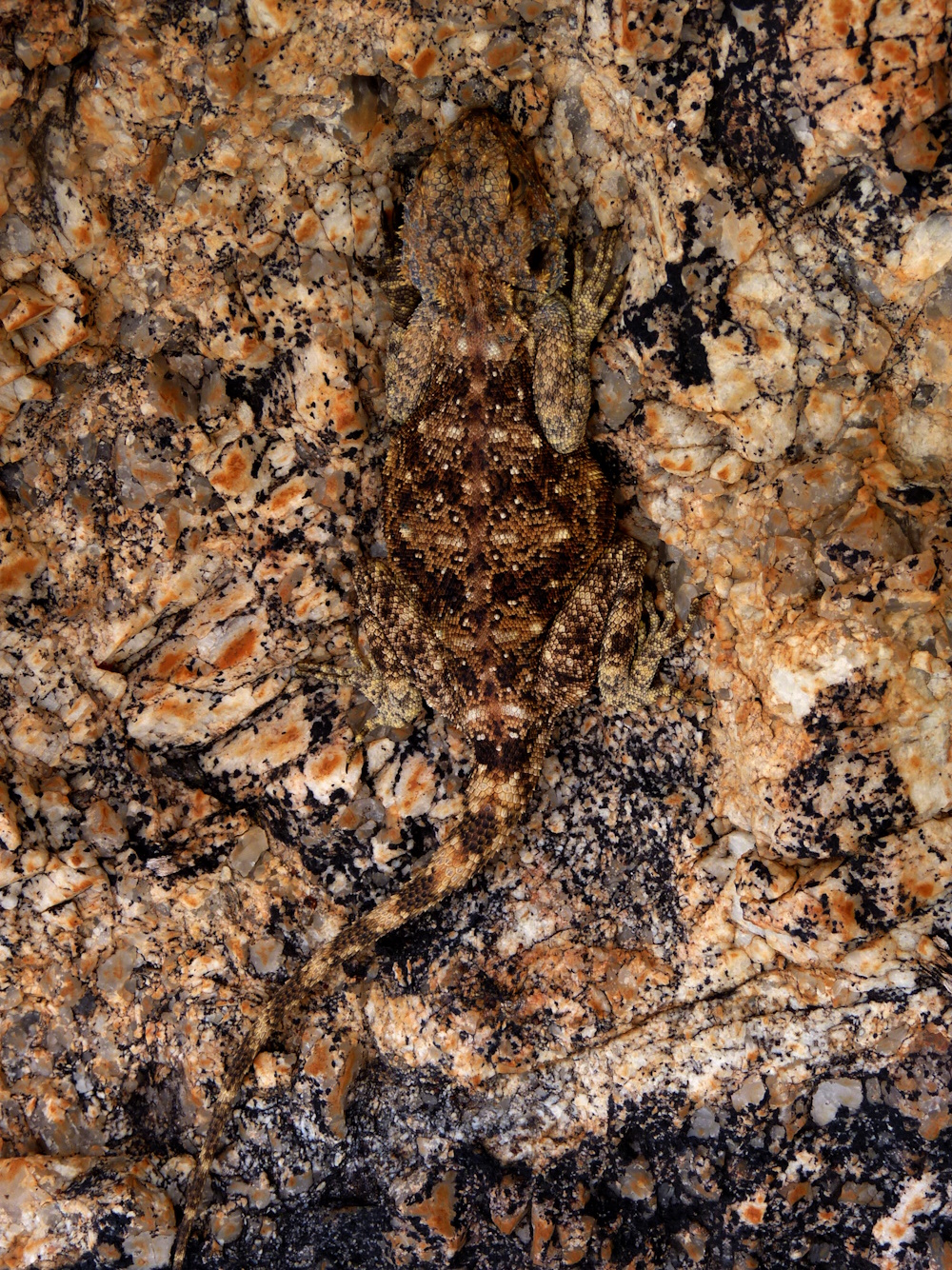
"Gneissic lizard" by Florent Grenier. This South-African lizard is well camouflaged on an outcrop of gneiss, having scales that mimic almost perfectly the texture, colors and structural patterns of the rock. This is surely a magnificent adaptation to escape predation in the harsh desertic environments of the Richtersveld (South Africa). Mimicry is a very common adaptation of many species (both animal and vegetal) in the deserts of Southern Africa, with the best examples being the stone grasshoppers and stone plants (Lithops species). The picture was taken with a Panasonic DMC-FZ38 in 2011 during a botanical expedition in the Richtersveld. Post-treatments only include cropping, luminosity and contrast adjustments.
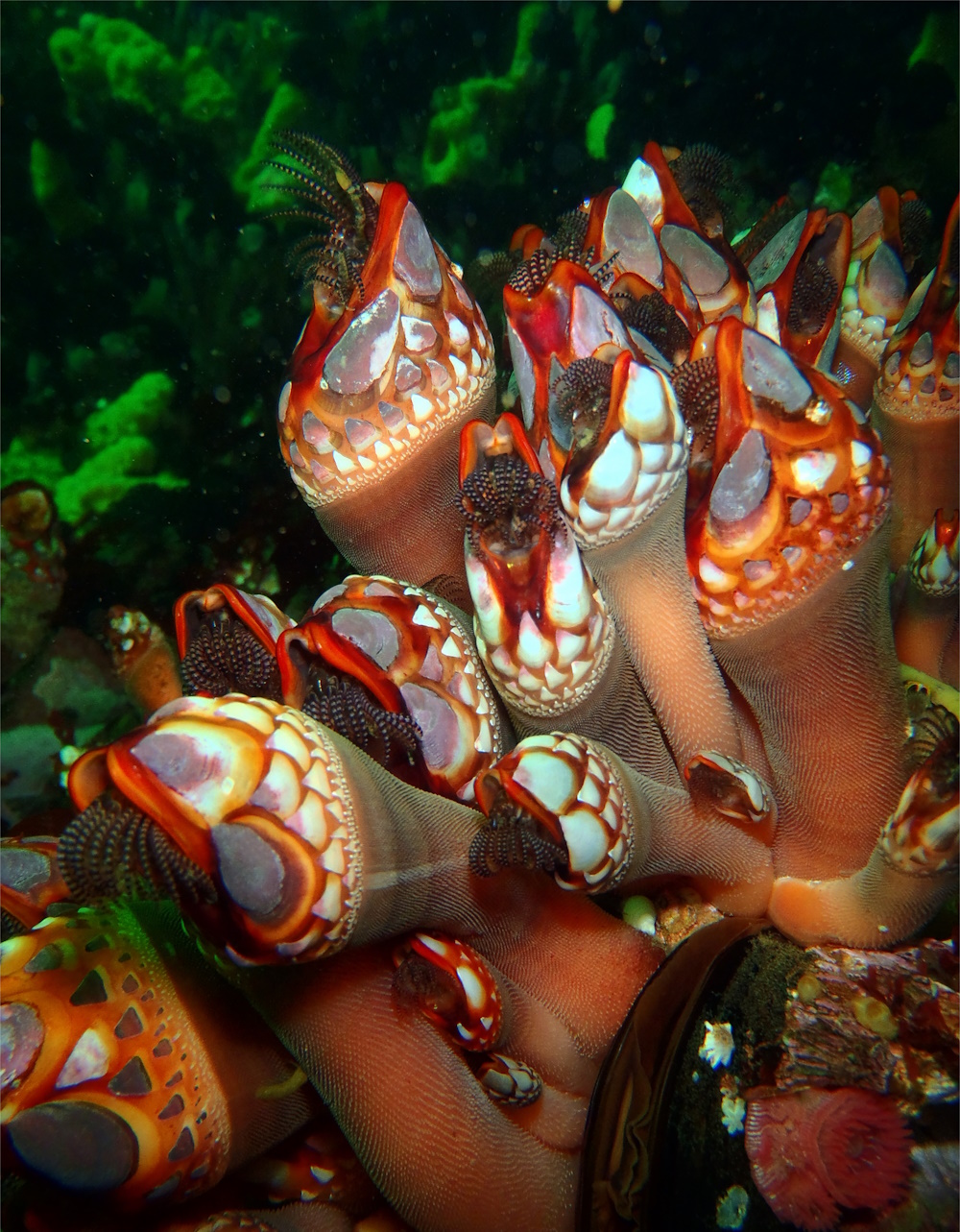
"Filtering the colour from the water" by Aaron Eger. Gooseneck barnacles only live within the ever-shifting intertidal zone - or so we thought. As divers first peeped beneath the waves at Nakwakto Rapids, some of the fastest in the world, they found the only subtidal gooseneck barnacles in the world. Around the aptly named "Tremble Rock", these bright red barnacles grow in abundance, life layered upon life. Their bright red colour comes from the hemoglobin in their blood. While hemoglobin is present in all goosenecks, it is normally masked by a protective pigment that shields the small crustacean from the rays of the sun. Not so at the rapids, this subtidal subspecies has evolved without the pigment and presents divers with a once in a lifetime burst of colour.
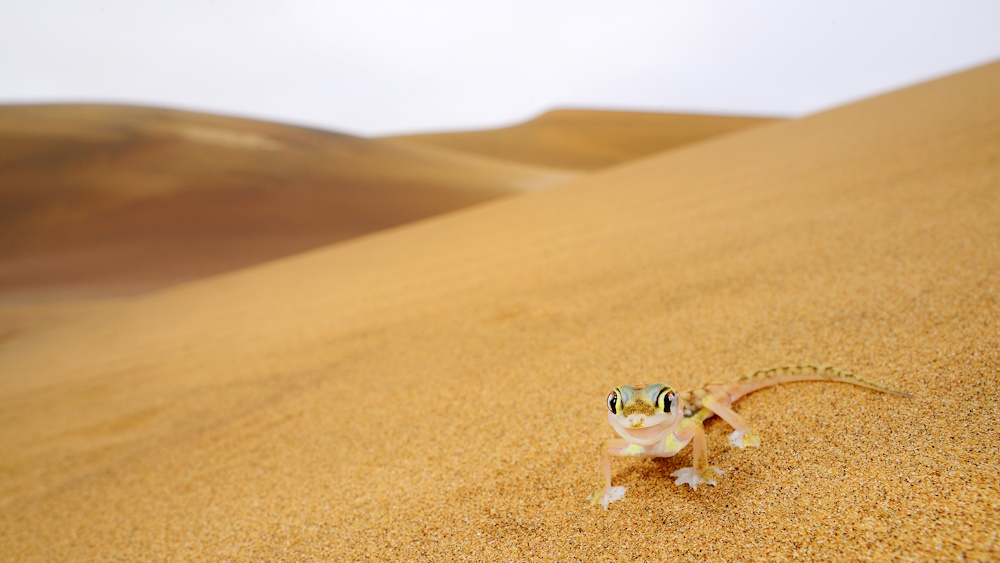
"Sandy" by Fabio Pupin. Pachydactylus rangei, Namib desert. This tiny gecko is endemic to the Namib desert and well adapted to the sand. Contrary to most of its relatives it does not have the typical adhesive toes, but webbed feet to crawl on the slippery sand. It burrows during the most hot hours of the day and it is mostly crepuscular but it can be active also during the first hours of the day, when the Namib is often covered in the misty clouds coming from the sea.
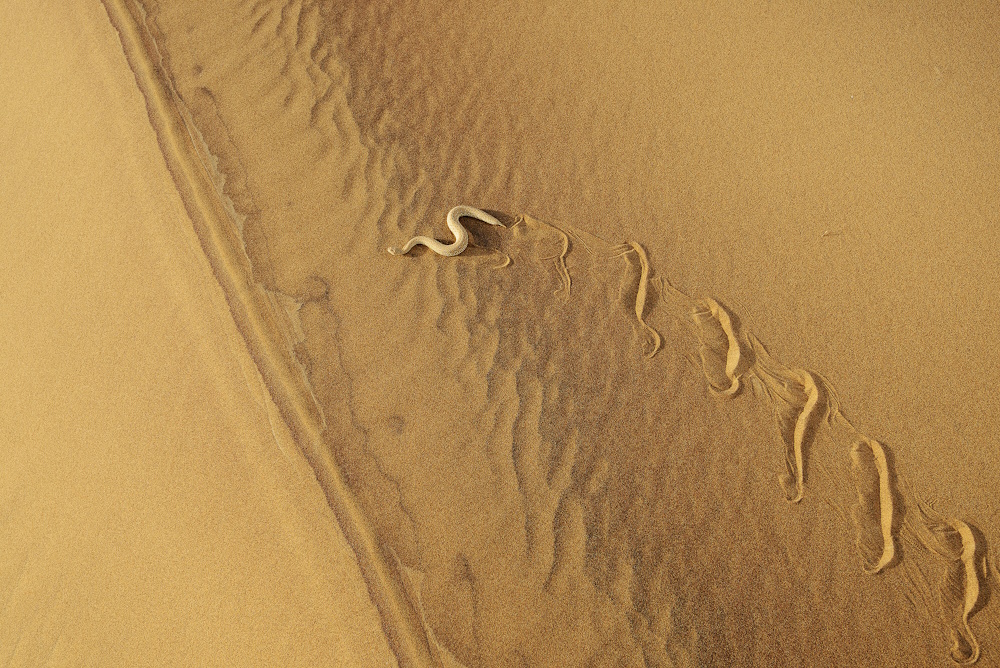
"A signature on the sand" by Fabio Pupin. Bitis peringueyi is a small adder endemic of the Namib desert. Here an individual leaves its distinctive track on the sand by sidewinding over a dune.
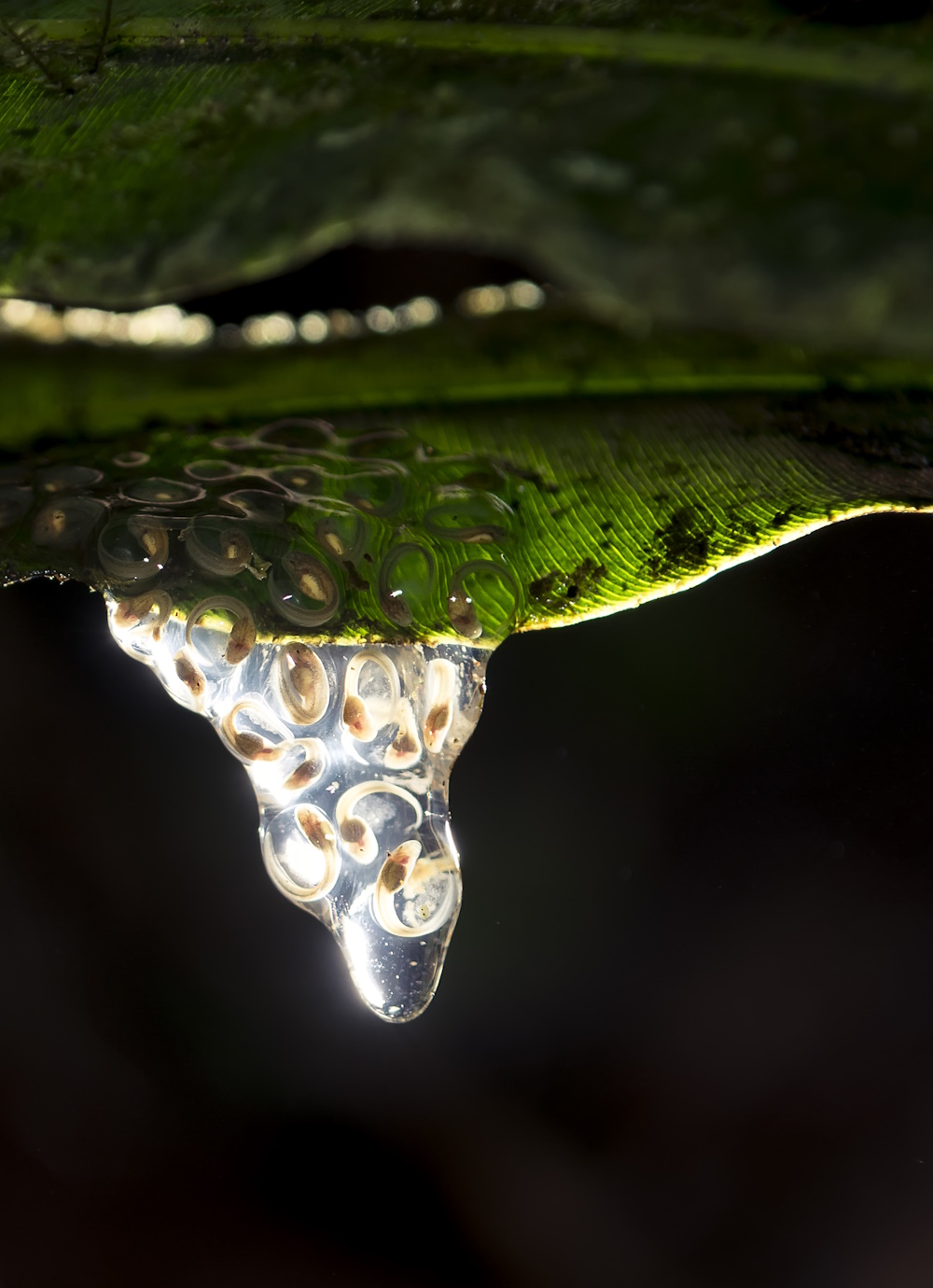
"Falling down is not always bad" by Gustavo Pazmiño. Crystal frogs, in this case Espadarana prosoblepon, have evolved to lay their eggs out of the water mainly to avoid predators. But this is not so easy as tadpoles need water, so adult females always lay their clutch over a stream of water and when the embryos hatch out of the eggs, tadpoles fall into the stream where they finish their embryonic development. These kind of clutches have been successful in nature despite the presence of terrestrial predators, desiccation and fungus infections, which are common to attack terrestrial clutches. The photo was made in Intag, Imbabura, Ecuador. Technical information: Nikon D7100, 55 mm, f5.6, 1/160 sec, ISO 200. The original file was cropped and added some sharpening, contrast and tone were controlled, some specific parts were burned, and a noise reduction filter was added.
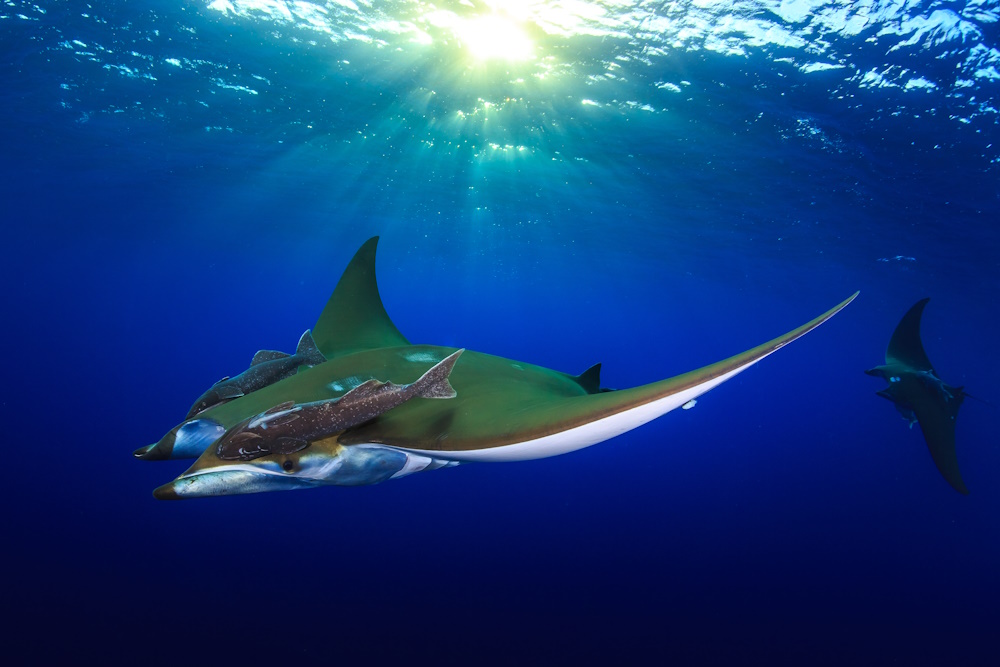
"Uncovering the secrets of deep diving devil rays" by Tane Sinclair-Taylor. The powerful wings and streamlined hydrodynamic bodyform of a devil ray (Mobula tarapacana) as it glides past an Atlantic Ocean seamount at Santa Maria Island in the Azores. Previously considered surface dwellers, recent tag studies have recorded mobula rays making some of the fastest and deepest dives known in the animal kingdom, reaching almost 2000m depth at speeds up to 6m per second. Shot with an Aquatica A5D3 Underwater Housing with super dome, Twin Sea & Sea YS250 Strobes, 15mm fish-eye lens, 1/200th, f7.1, ISO200.
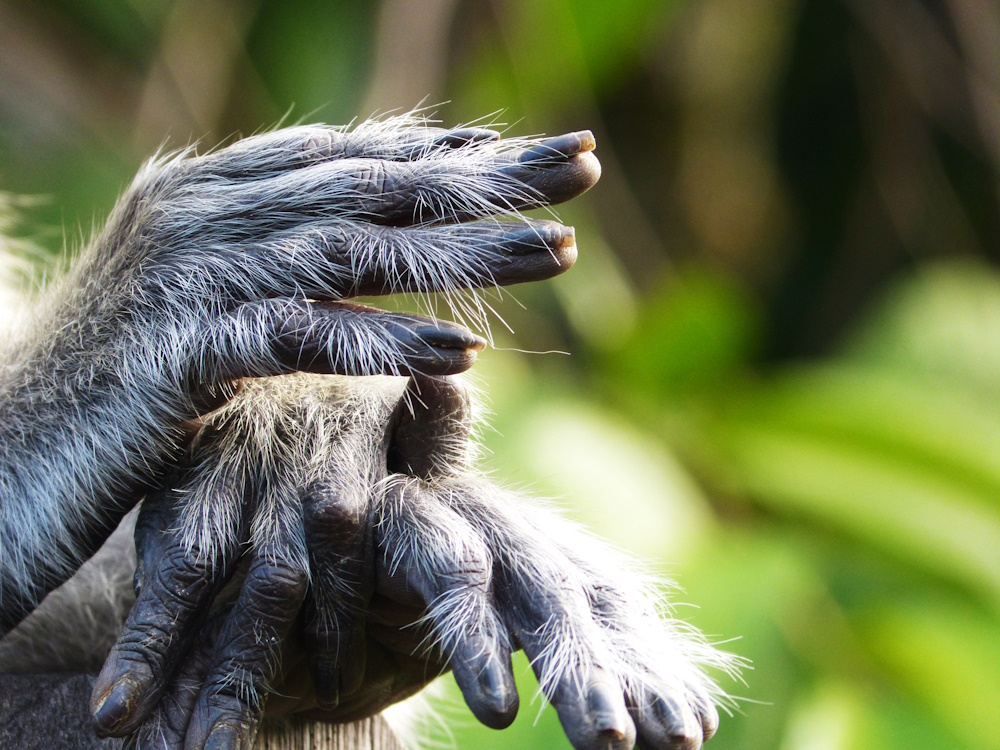
"Same hands" by Matthew Jarvis. The delicate and precise hands of the long-tailed macaque (Macaca fascicularis) show how closely related to monkeys humans really are. With a similar touch, shape and fingernails, we retain many of the same characteristics despite living completely different everyday lives.
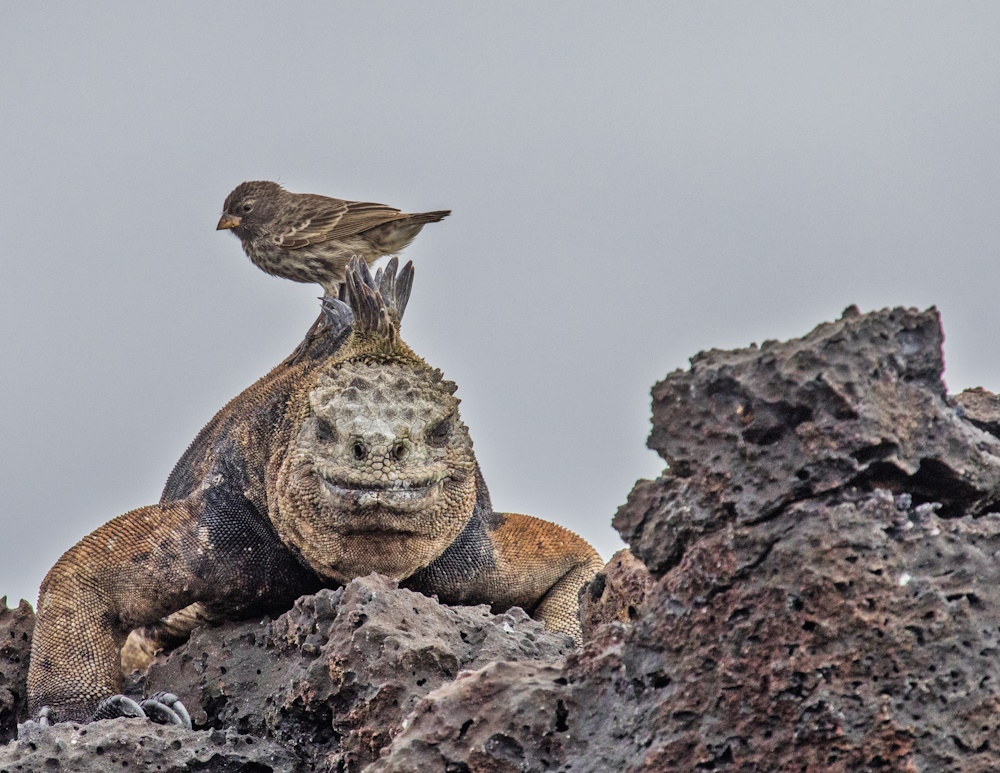
"A Darwin finch perches on a marine iguana" by Kiyoko Gotanda. A small ground finch (Geospiza fuliginosa) perches on a marine iguana, Amblyrhynchus cristatus, in the Galápagos Islands. The finch will peck at the dead skin on the marine iguana. Both species are endemic to the Galápagos, with the finch being a classic Darwinian example of adaptive radiation. Processing: crop, white balance, shadow and tone adjustments, saturation.
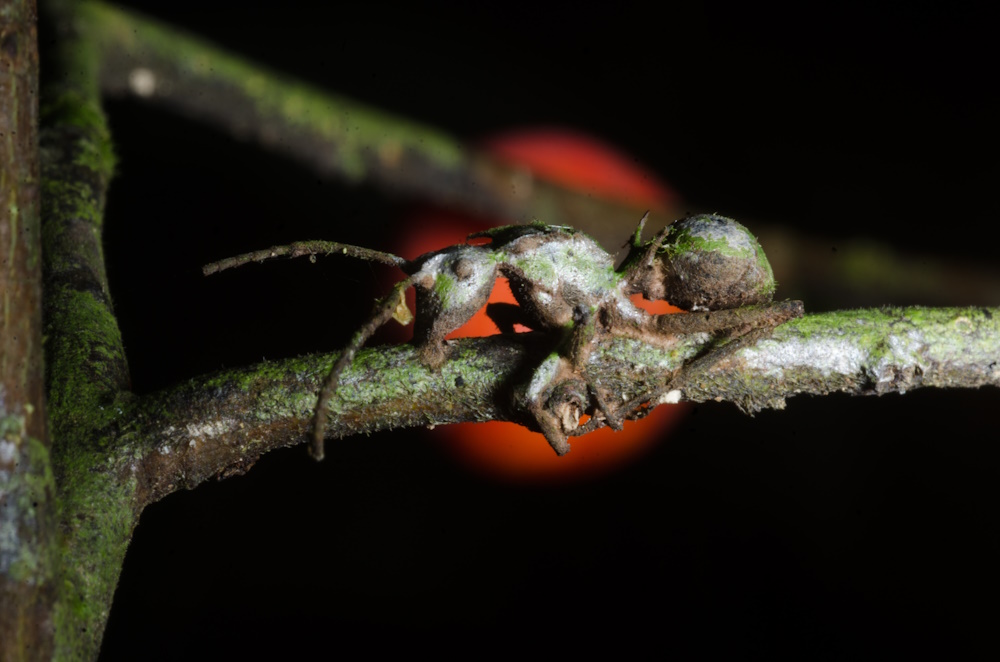
"Parasitised ant" by Ehoarn Bidault. During the hundreds of thousand years of their existence the rainforests of Central Africa have been housing thousands of species, many of them still to be discovered, that have evolved based on their predation on or by another species. This phenomenon is called co-evolution. This picture depicts an ant which has been victim of a parasite fungus adapted to this particular ant species. The fungal spores freely fly in the air, waiting to randomly land on an ant individual. Then it grows through the insect shell and inside its body. When it reaches the brain, it forces the ant to grab a high leaf or twig, and then it kills it, before releasing new spores and completing its cycle. This photo has been taken in Gabon, using a Nikon D700 camera mounted with a 60mm Macro lens. No modifications have been made in post-production, except erasing a few dirt spots.
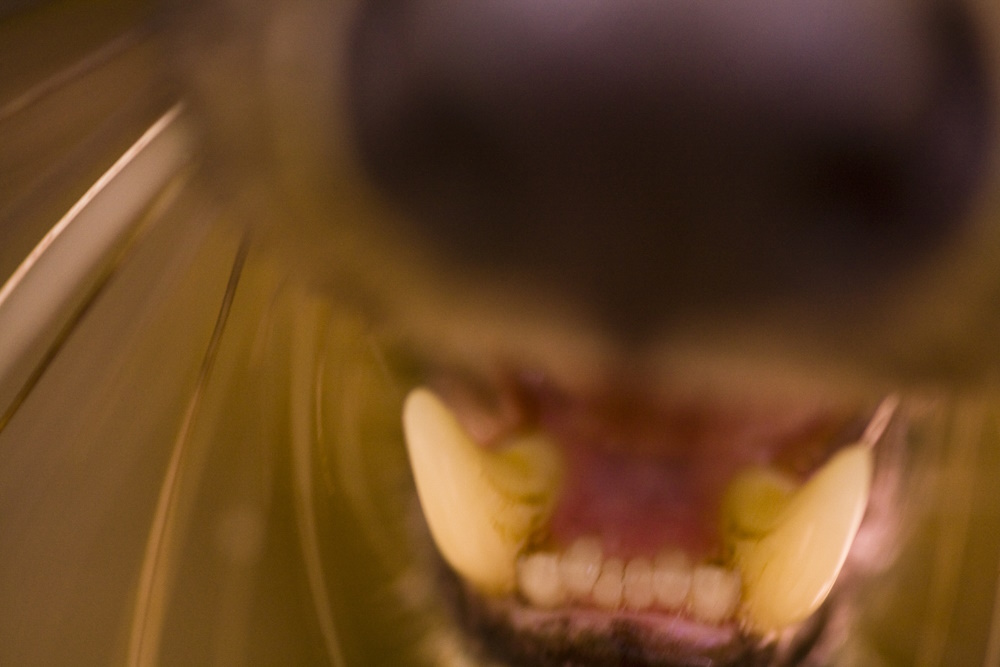
"Into the jaws of..." by Jason Gilchrist. The teeth of a carnivore. The owner of this mouth is a fossa, the largest predator in Madagascar. It can climb trees with ease and speed and is bad news if you are a lemur. Kirindy Forest, Madagascar.
